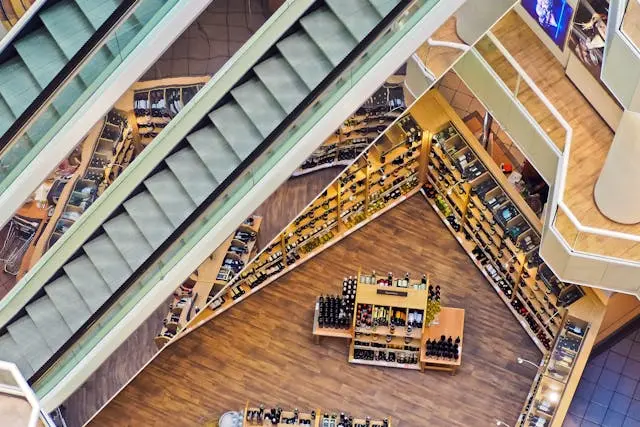What Is Commercial Facility Management?


Office buildings, manufacturing plants, airports, schools, and other commercial facilities are epicenters of productivity. However, every facility requires detailed, timely management to stay in peak condition. Organizations can avoid unexpected downtime, expensive repairs, and even regulatory fines with proper commercial facility management.
Commercial facility management is key to maximizing your investment in state-of-the-art facilities. Learn what commercial facility management is and the four best practices to improve the value of your facility.

Commercial facility management is a process facility managers follow to maintain the infrastructure of a commercial property. The process applies to any commercial property, whether that’s a retail store, a chemical plant, or an office building.
Ultimately, the goal of commercial facility management is to keep buildings safe, compliant, and cost-effective. To do that, facility managers use strategies like preventive maintenance, energy management, and technology to optimize their space for maximum efficiency and cost savings.
Commercial facility maintenance includes key responsibilities such as:
Facility management encompasses a range of responsibilities. It’s not unusual for larger organizations to have an entire facilities department, while smaller buildings may have one manager who relies on third-party vendors.

Facility management requires much more than paying the electricity bill or scheduling conference rooms. This varied discipline requires juggling several tasks at once, making it difficult to manage everything without an organized system.
Following these best practices can help you streamline your commercial facility management processes.
It’s impossible to do facility management without a software solution, regardless of facility size. Both large and small facilities benefit from using a computer-aided facility management (CAFM) solution to log all facility details, schedule maintenance, store documents, and much more.
A digital system makes it possible to do more with fewer resources, helping facility managers stay on top of audits, daily tasks, and other duties without dropping the ball.
Tracking, monitoring, and logging asset data requires bridging the gap between assets on the ground and your facility management solutions. That’s why it’s so crucial for facilities to use durable labels and tags.
Whether you’re simply labeling laptops to streamline check-out procedures or need to add safety instructions to heavy machinery, the quality of your facility labels and tags matters.
Camcode’s facility labels are rated for 20-plus years in even the harshest environments, ensuring your tags remain readable for the long haul.
Many organizations still manage their facilities reactively. While this approach is understandable, especially if you have a small facilities or maintenance team, reactive facilities management continues the cycle of unexpected disruptions that hurt your business.
Instead, lean on your commercial facilities management software. Proactively schedule maintenance before there’s an issue with a structure, room, or equipment. By caring for your assets long before there’s an issue, you’ll extend their lifespan and reduce the likelihood of sudden failures.
Some organizations believe going green is expensive and complex, but sustainability is a smart way to improve commercial facility management.
Sustainable facilities are generally more cost-effective, thanks to features like solar panels, recycling programs, LED lights, reclaimed water, low-flow water fixtures, and more.

The process begins with identifying a dedicated facility manager or team responsible for overseeing daily operations, maintenance, and long-term planning. Implementing a digital system, such as a Computer-Aided Facility Management (CAFM) solution, streamlines tracking, scheduling, and managing all facility-related tasks. This software helps automate preventive maintenance, inspections, and compliance with safety standards, minimizing the risk of costly repairs or unexpected downtime.
Additionally, organizations should adopt sustainability practices, such as energy-efficient lighting, waste reduction, and water-saving technologies, to lower operational costs and meet environmental goals. Durable labeling and tagging systems also play a critical role in asset management, providing clear information for employees and contractors to maintain the infrastructure.
Commercial facility management is key to running an efficient and profitable business, whether you have a single facility or multiple locations. You invest a lot of time and money into your facility; make the most of it with proactive commercial facility management.
Clear communication is a must-have for all facilities. Building maps, room labels, and equipment tags keep your team organized and productive at scale. Request a free Camcode label and tag evaluation kit to test our labels in your environment and to see the difference for yourself.
Absolutely. Proper facility management embraces sustainability, which helps organizations have a smaller carbon footprint while reducing costs. Facility managers conduct energy audits, optimize HVAC systems, use LED lighting, and set up building automation systems to monitor energy usage.
Facility managers ensure buildings stay compliant by conducting regular safety audits. They’re also required to maintain emergency exits, replace faded signage, and record all inspections. Many facility managers will also train staff on safety protocols and use safety tracking systems, like cameras, to follow the law.
Tools like Computerized Maintenance Management Systems (CMMS) automate daily tasks for facility managers. This software tracks assets, schedules maintenance, manages work orders, and monitors energy consumption in real time.
Our sales engineers are experts in automatic asset tracking, tagging and identification,a nd can answer all your questions. Get in touch now.
Lets Talk ›Enter your information and get a free checklist of the top questions to answer to plan a successful asset tagging project for any maintenance tracking or facility management system.